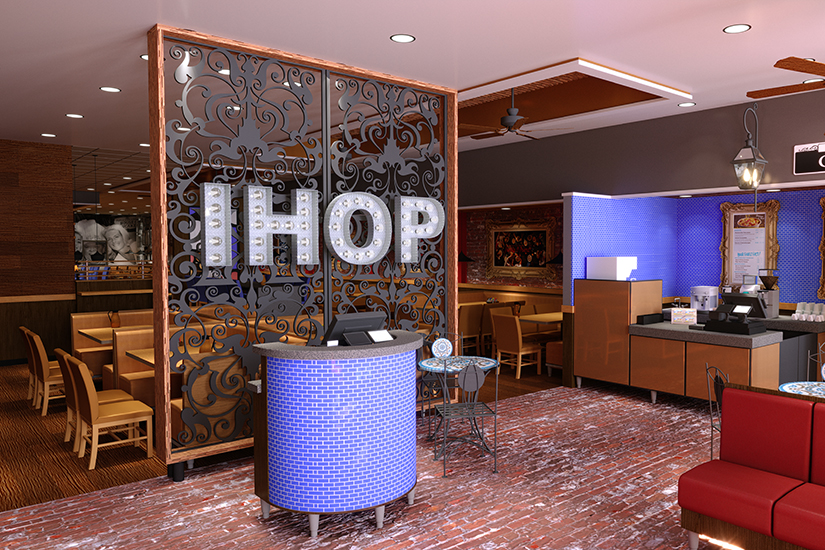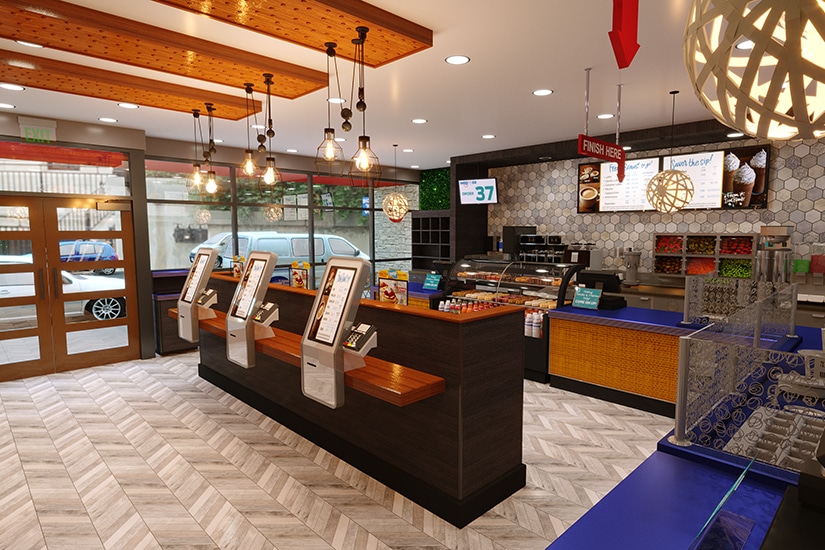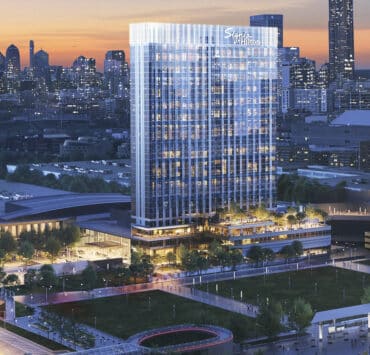|
Getting your Trinity Audio player ready...
|
Everyone eats—it’s a truism as old as time. But the people at Dine Brands Global who are tasked with building the places where millions of us eat—or as is increasingly the case, where we pick up what we eat—are responding to changing times in ways that upend the restaurant industry.

Christian Talavera is senior design manager at Dine Brands, parent company to Applebee’s Grill + Bar and IHOP, the latter of which is most associated with breakfast pancakes. Both brands are considered part of the “casual dining” segment of the restaurant industry. And while both are well-established and widely marketed brands, significant changes are afoot that are rolling out as we reach a post-pandemic economic recovery.
Talavera is well suited for these responsibilities, particularly in this era of reinvention, because he is an architect and designer who isn’t afraid to challenge convention. He says his favorite quote, originally said by singer Brian Wilson of the Beach Boys, sums it up: “Beware the lollipop of mediocrity; lick it once and you’ll suck forever.”
To the uninitiated, that approach might seem at odds with any national restaurant brand that succeeds because of sameness: of a brand look, of a predictable menu, and of the level and type of service the consumer expects. Talavera’s task includes designing restaurants that facilitate all those things. But so much has changed—during and after the onset of COVID-19, in particular—that Dine Brands’ restaurants need to adapt as well.
The first and most obvious challenge to all restaurants since the onset of the pandemic was in-house dining. The economy-wide shutdown of all indoor dining put the entire $900 billion industry in jeopardy. Takeout and delivery were what kept the doors open for some restaurants. Many IHOP and Applebee’s restaurants were able to provide those service modalities because their locations had built-in capabilities to do so.

“We were challenging traditional restaurant design concepts already before the pandemic with takeout, drive-up facilities, and highly adaptable asset vehicles,” says Talavera, who was a lead designer and design brand manager with another national restaurant group before accepting his current role with Dine Brands in 2017. “But COVID sped up the process of new approaches and new designs.”
Now, as diners seem to be showing sustained interest in alternatives to dining indoors—with outdoor café dining, pickup windows, and advanced ordering to eliminate waiting—franchisees are asking Talavera to design new restaurants and rebuilds to accommodate these options.
“One such prototype being developed for Applebee’s focuses on a smaller, more efficient design that balances off-premises and full service dine-in while improving ROI, influenced to some degree by the pandemic,” Talavera explains. “And while this and the traditional Applebee’s allow to-go service, this provides broader flexibility. It also accommodates on-premises outdoor patio seating.”
This means a restaurant layout that enables easier customer ingress and egress, optimizing service to pedestrian and motorist takeout orders. In some iterations of this evolved design, a drive-through customer would order via a phone app instead of an ordering kiosk. The design is also adaptable for various footprints.
For IHOP, some of the same changes in guest behavior are prompting innovation to support off-premises styles without disrupting the full-service experience. A second concept is IHOP’s take on the fast casual model, known as “Flip’d by IHOP.” Tests in three markets began in mid-2021 (in New York City; Lawrence, Kansas; and Columbus, Ohio), offering an all-day menu in a largely carryout format.

Talavera explains that while he immensely enjoys working on these new concepts, they all bear the same level of complexity regardless of size and format. “There is great interdependency in store design,” he says. “That includes taking into account site analysis, design, construction, and enabling food safety, operational logistics, the supply chain, marketing, and information technologies. These all are compressed into a single space.”
The California native (Dine Brands is based in Los Angeles) takes his responsibility to the customer’s time in the space seriously, knowing the experience is as important as the food. He points to an IHOP on Canal Street in New Orleans, where the walls are festooned with an art installation that is an assemblage of antique grilles and picture frames, layered on top of each other.
But it’s about more than an interesting interior to Talavera: “Local customization endears customers and communities to the brand,” he says. “We make sure when a design solution is developed that wherever you sit in our restaurants, there should be something memorable about it.”
Predicting all that will happen in the post-pandemic era is a fool’s errand. But what Talavera and his colleagues learn from their franchisees is that takeout will continue to be huge, outdoor seating will remain popular, and safety standards will continue to be elevated.
In other words, eating looks to remain in vogue. Companies like Dine Brands just will provide us with more options for how that happens—and none of them will be mediocre.


